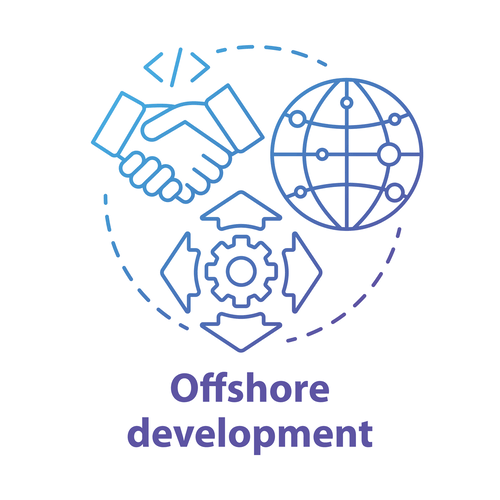Content
They are triggered by commits to the codebase and integrate with code repositories, version control systems, and DevOps tools. Tekton is a Google-developed, open source CI/CD framework for Kubernetes-native projects. Tekton leverages Kubernetes to create an abstraction layer that enables developers to build, test, and deploy applications across hybrid and multi-cloud environments. TeamCity can reuse configurations from parent projects for child projects, run parallel builds across multiple environments, run history builds, and ensure the CI server remains stable.
As you build a product, your codebase keeps growing and, unless properly managed, can become a virtual Rubik’s cube for future developers to solve. Back in the day, when waterfall methodology ruled, it could take months or even years to deliver a product’s first shippable version. You https://globalcloudteam.com/ can consider the enterprise edition to use more advanced features and unlimited build configuration. Caching is another popular features as It’s one of the most effective ways to make jobs faster on the platform by reusing data from expensive fetch operations from previous jobs.
Accelerating engineering teams, with the control ambitious businesses require
In this article, we discuss popular CI tools, how they support rapid integration cycles, and their most appropriate use cases. Continuous Integration methodology enables developers to provide immediate reporting whenever any defect is identified in the code so that immediate corrective action can be taken. It is an important part of DevOps that bis used to integrate various Devops stages.
- The deployment automatically launches and distributes software to end users.
- It also allows developers to create builds through containers and VMs.
- Some tools only support a specific vendor’s ecosystem – for example, GitHub Actions only supports GitHub repositories.
- Container-based pipelines allow you to reuse their blocks in other workflows.
- Buddy’s pride is simplicity, and it shines through their automated pipeline feature which helps developers to test, build and ship their software to production quicker than ever before.
The final stage of a mature CI/CD pipeline is continuous deployment. As an extension of continuous delivery, which automates the release of a production-ready build to a code repository, continuous deployment automates releasing an app to production. Because there is no manual gate at the stage of the pipeline before production, continuous deployment relies heavily on well-designed test automation. There are many continuous integration tools on the market to supplement your software development process. By utilizing continuous integration as a strategy, you save your business time and money. When using CI tools, the new code segments are built, integrated and tested in mere minutes, providing the developer with immediate feedback on the status of the code and any related issues.
Common CI/CD Tools You Should Know
While PHPCI doesn’t compare to the functionality that of Jenkins, it is a simple and easy to use continuous integration platform for PHP developers. With the fast integration of Bitbucket, GitHub, and local environment, you can have your integration process streamlined as quickly as necessary. If PHP is your daily bread and butter, then PHPCI will ensure that you’re deploying apps that have survived the test of stability that PHPCI provides.
The store is backed by the GitHub database and all data is encrypted at rest. Bitbucket Pipelines uses Docker containers to execute the steps in your pipeline. This means that each step in your pipeline will run in its own container.
Enterprise Agility
With CircleCI, teams are never limited in their ability to grow and innovate. Our experts are here to guide and support you every step of the way. Choose a testing infrastructure that is flexible enough to handle updating versions, adding devices, and manage data capacity while maintaining stability.
This robust versioning engine manages and secures any kind and size of file. It also provides replication for high-performance developments and builds. A CI pipeline prevents common development pitfalls, speeds project turnaround time, and improves employee satisfaction and productivity. It’s worth noting that most CI tools will also support the next phases of development once the application has cleared the automated testing stage. Organizations implement CI as the first step to building a full CI/CD pipeline.
Integrated AppSec Solutions
Additionally, the Jenkins server offers multiple installation and deployment options, enabling automated builds on a wide range of hosts. Jenkins can be installed and run on-premises or used as a cloud-based service. It supports most environments out of the box through native integrations and extensible plugins. It is popular for allowing various source controls, email notifications and build technologies with the help of plugins.

Suppose teams cannot do a complete integration within an iteration. In that case, they can make near-term trade-offs on what’s possible while continuously improving their techniques and infrastructure toward this goal. Make integration results visible – When the integration process breaks, everybody should know why it failed. When it’s fixed, creating new tests should detect the problem earlier and prevent it from happening again. System demo – This is where stakeholders evaluate a solution’s readiness for production deployment. Continuous Integration is an aspect of the Continuous Delivery Pipeline in which new functionality is developed, tested, integrated, and validated in preparation for deployment and release.
What Are Continuous Integration Tools?
You can use it to automate projects, run tests, and debug code. Once a build is successful, it is moved to the staging phase for testing, where it is subjected to integration and load tests. Bitbucket allows developers to insert threaded conversations and in-line comments into code snippets. continuous integration solution The feature improves collaboration between cross-functional teams, making it easy to inspect code changes and get real-time feedback from all stakeholders of the workflow. Through the GitLab web UI, developers can also inspect the portions of the code covered by automated tests.

